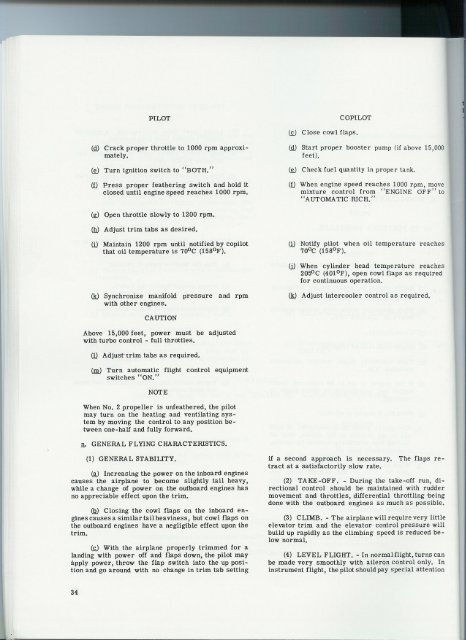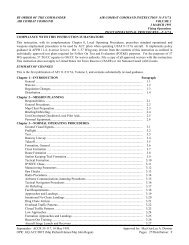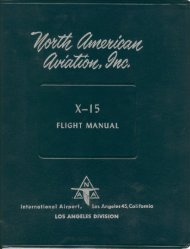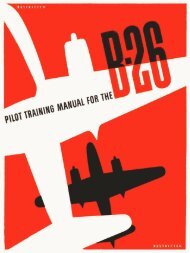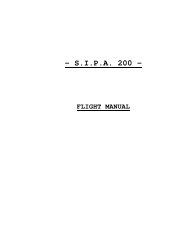B-17 Pilots Manual.pdf
B-17 Pilots Manual.pdf
B-17 Pilots Manual.pdf
Create successful ePaper yourself
Turn your PDF publications into a flip-book with our unique Google optimized e-Paper software.
-JPILOTCOPILOTU;j Closecowl flaps.@ Crack proper throttle to 1000 rpm approximately.W Turn ignition switch to "BOTH."(f) Press proper feathering switch and hold itclosed until engine speed reaches 1000 rpm.@ Start proper booster pump (if above 15,000feet),W Check fuel quantity in proper tank.(f) When engine speed reaches 1000 rpm, movemixture control from "ENGINE OFF" to"AUTOMATIC RICH."(g) Open throttle slowly to 1200 rpm.(h) Adjust trim tabs as desired.ill Maintain 1200 rpm until notified by copilotthat oil temperature is 700C (1580F).ill Notify pilot when oil temperature reaches700C (158°F).ill When cylinder head temperature reaches2050C (4010F), open cowl flaps as requiredfor continuous operation.au Synchronize manifold pressure and rpmwith other engines.au Adjust intercooler control as required.CAUTIONAbove 15,000 feet, power must be adjustedwith turbo control - full throttles.OJ Adjust-trimtabs as required.(m) Turn automatic flight control equipmentswitches "ON."NOTEWhen No.2 propeller is unfeathered, the pilotmay turn on the heating and ventilating systemby moving the control to any position betweenone-half and fully forward.n. GENERAL FLYING CHARACTERISTICS.(1) GENERAL STABILITY.@) Increasing the power on the inboard enginescauses the airplane to become slightly tail heavy,while a change of power on the outboard engines hasno appreciable effect upon the trim.(Q) Closing the cowl flaps on the inboard enginescauses a similar tail heaviness, but cowl flaps onthe outboard engines have a negligible effect upon thetrim.U;j With the airplane properly trimmed for alanding with power off and flaps down, the pilot mayapply power, throw the flap switch into the up positionand go around with no change in trim tab settingif a second approach is necessary. The flaps retractat a satisfactorily slow rate.(2) TAKE-OFF. - During the take-off run, directionalcontrol should be maintained with ruddermovement and throttles, differential throttling 'beingdone with the outboard engines as much as possible.(3) CLIMB. - The airplane will require very littleelevator trim and the elevator control pressure willbuild up rapidly as the climbing speed is reduced belownormal.(4) LEVEL FLIGHT. - In normal flight, turns canbe made very smoothly with aileron control only. Ininstru~nt flight, the pilot should pay special attention34


